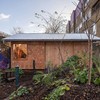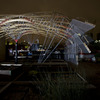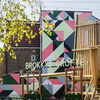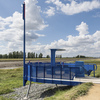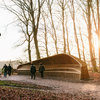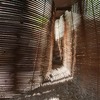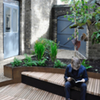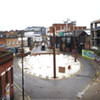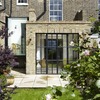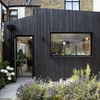The Forest Garden
Subscribe now to instantly view this image
Subscribe to the Architects’ Journal (AJ) for instant access to the AJ Buildings Library, an online database of nearly 2,000 exemplar buildings in photographs, plans, elevations and details.
Already a subscriber? Sign in
6O860V7X2FGSQT7_04
All photographs Samir Patel for HUT and Emma Brolly for HOS Download Original
HUT Architecture and HOS Landscapes have transformed a traffic island in Leytonstone into a vibrant community garden for residents to enjoy.
HUT applied a circular approach to construction using innovative methods of using construction waste to revalue the connection with our lost natural habitats.
The idea of The Forest Garden is to be low-maintenance, visually appealing and to enhance biodiversity. The garden was designed to provide natural habitats for bees, bugs and butterflies.
Large areas of impermeable tarmac have been replaced with recycled building aggregate, sand, gravel and timber - allowing natural rainwater runoff to percolate the ground rather than running off into mains drains. The use of water retention planting and ‘rain gardens’ is to ensure rainfall is recycled to water the planting, while reducing the burden upon drainage infrastructure.
The self-seeding nature of the perennial planting means that after initial sowing, the plants will return year on year, only increasing in variety and verdancy with each passing season. The fourfold increase in trees on the site is a long-term investment in carbon sequestration and will ensure the longevity of the planting on site for decades to come.
In the centre of the garden sits a rammed earth wall, an acknowledgement of the waypoint marker that originally provided Leytonstone with its name. The sedimentary layers of the low wall marks the presence of the adjacent, yet buried, Philley Brook River.
Now complete, the project has been adopted by a community of green-fingered local residents, who will tend to the garden over the coming years. The project provides an opportunity for neighbours to congregate and share in a new green space, particularly in a time when outdoor spaces have had their value greatly increased. The project won the inaugural People’s Choice Award at the Waltham Forest Design Awards 2021.
Data
- Begun: Sep 2020
- Completed: Oct 2020
- Floor area: 100m2
- Sectors: Public realm, Landscape design
- Total cost: £40,000
- Funding: Waltham Forest making places competition
- Tender date: Sep 2020
- Address: Junction of Drayton, Southwest and Bulwer Roads, London, E11 1BX, United Kingdom
Professional Team 
- Architect: HUT Architecture
- Client: London Borough of Waltham Forest
- Main contractor: HOS Landscapes
- Community engagement consultant: Moira Lascelles



















